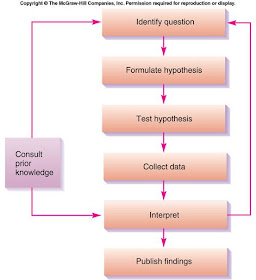Chapter 1
Understanding our Environment
Environmental Science
Science As a Way of Knowing
Chapter 2
Principles of Ecology: Matter, Energy, and Life
Principles of Matter and Energy
Building Blocks of Life
Energy
Food Webs
Ecological Pyramids
Biogeochemical Cycles
Lecture 3
Ecosystem
Components of ecosystem: Abiotic, biotic
Species Interaction
Population Dynamics
Community Properties
Lecture 4
Biomes
Climate
Land Biomes
Aquatic Systems
Lecture 5
Issues and Policies
I. Human Population (Population Growth, Family Planning and fertility control)
II. Biodiversity (Extinction, Habitat destruction)
III. Environmental conservation (Forest, Grasslands, Parks, and Nature Preserves)
IV. Food and Agriculture (Malnutrition, Hunger and food security, Obesity, Food sources, Soil (Degradation, Erosion), New crops and Genetic Engineering, Sustainable Agriculture)
V. Environmental Health and Toxicology
VI. Air: Climate and Pollution (Greenhouse effects, Acid rain, El Niño/ Southern Oscillation, Climate change, Air Pollution)
VII. Water: Resources and Pollution (Fresh water shortages, water management and conservation, water pollution)
VIII. Environmental Geology and Earth Resources (Minerals and rocks, environmental effects of resource extraction, conserving geologic resources, geologic hazards)
IX. Energy (Sources and Uses, conservation)
X. Solid and hazardous wastes (Waste disposal method, Hazardous and Toxic wastes)
XI. Sustainability and Human Development (Trade and development, Urban problems)
XII. Environmental Science and Policy (Making Decisions, Environmental Education, Environmental policy, law, international treaties and conventions)

Environmental Science
The systematic, scientific study of our environment as well as our role in it. It is an interdisciplinary field that covers both the physical sciences - physics, chemistry, biology, geology, geography, resource technology, and engineering, -and social sciences - resource conservation and management, demography, economics, politics, and ethics (Miller, 1994).
It encompasses the surrounding conditions that affect man and other organisms. Natural and human resources are interdependent and the use or misuse of one affects the other. Natural changes are healthy but human-induced changes like environmental disturbances cause damages in the system. There must be concerted effort to protect and conserve the environment. This can be attained through the concept of sustainable development.
Environmental scientists draw on traditional fields of study, making connections among different subjects and relating to a variety of audiences. In common with biologists and earth scientists, they often take a long-term view of earth’s resources. In common with philosophers, social scientists, politicians, and lawyers, they explore complexities of human motivations and group behaviors. In common with economists, engineers, and physics professionals, they often rely on mathematical models when direct experiments are not possible. When the subject at hand is understanding human interaction with the earth, everyone is connected.
Environmental Science is
- Highly interdisciplinary
- Inclusive
- Holistic
- Mission-Oriented

Environment
Refers to the sum of all external factors acting on an organism or community of organisms which includes the living (biotic) organisms like plants and animals, and the nonliving (abiotic) elements such as air, water, and soil.
Environment also includes the circumstances and conditions that surround an organism or group of organisms. They may be social and cultural conditions that affect an individual or community
SCIENTIFIC METHOD

No comments:
Post a Comment